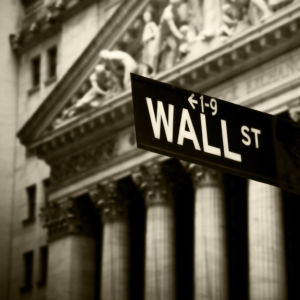The Democrats, supporting in whole or in part the goals of the Green New Deal, have, one suspects, a vision of themselves facing off against an implacable opposition of energy companies and financiers committed to business as usual.
The fact is, if the Democrats win the White House in November, they may find the enemy isn’t fighting. Indeed, they may find energy producers — both oil and natural gas — and the electric utilities are no longer opponents but devout, if questioning, allies in the struggle for carbon neutrality.
And Wall Street, often identified as the evil force behind the polluters, is striving to be green, and to assess and direct the effect of their lending with a view to reducing carbon emissions and remediating them.
A remarkable organization, the Partnership for Carbon Accounting Financials (PCAF), has enlisted top global banks and lenders in the decarbonation of the future. In the United States its partners include Amalgamated Bank, Bank of America, Citibank, BlackRock and Morgan Stanley.
A slew of banks spread across western Europe has joined PCAF, including Britain’s NatWest and Denmark’s Danske Bank. Its first task will be to develop organization-wide standards and methodology to assess the carbon impact of their lending.
Oil and gas entrepreneurs and electric utilities have long been entwined with their bankers. They need each other. It takes a lot of capital to explore for and exploit oil and gas deposits, and the electric utilities have traditionally been the most capital-intensive
So complete has been the relationship between banking and energy that American Electric Power, once the nation’s biggest electric power company, had its headquarters on Wall Street for decades before moving it to Columbus, Ohio, where its customer base is.
The Edison Electric Institute, now a fixture among the power players in Washington, was headquartered in New York City when I began writing about the utility industry in 1970. Likewise, the Atomic Industrial Forum, a forerunner of the Nuclear Energy Institute, moved to the Washington area.
When the price of oil went down suddenly in the 1980s, a bunch of Southwest banks failed. The banking-energy linkage is absolute and at heart unshakable. And it can be dynamic and progressive.
PCAF is the singular and extraordinary creation of Guidehouse, a globe-spanning environmental consulting firm. It began modestly in Holland — one of the most eco-friendly countries in the world — in 2015 and spread to banks across Europe. But its big expansion came in the last two years with the addition of the big American financial institutions and NatWest.
It won’t just be large energy investments that will be subject to scrutiny and assessment by PCAF members. “It will extend all the way down to mortgages,” Jan-Willem Bode, a Guidehouse partner based in London, told me in a guest appearance on “White House Chronicle,” the weekly news and public affairs program on PBS.
Bode said the banks want to harmonize how they measure their carbon impact and work toward investments in everything from alternative energy projects, like wind farms, to solar homes that reduce the carbon load.
Bode insisted the commitment of the partners is real. They want a decarbonized future and will favor investments which bring that about.
Of course, there will be critics aplenty. They’ll bandy about the pejorative “greenwashing” and will suggest that the companies that financed carbon production in the past are still at it.
I think they haven’t got the message: America will be greened a lot faster when big money says “green.”
Take what Citi’s CEO Michael Corbat said, “If there’s one lesson to be learned from the COVID-19 pandemic, it is that economic and physical health and resilience, our environment and our social stability are inextricably linked.”
The greenback is getting greener.

